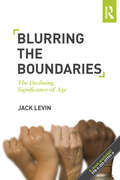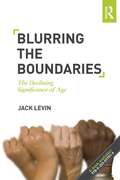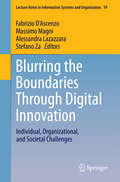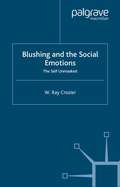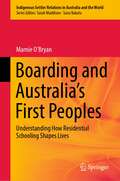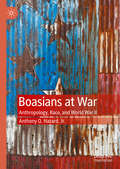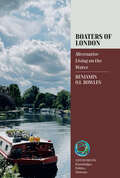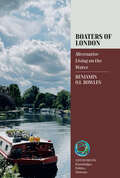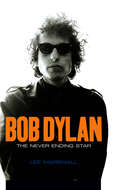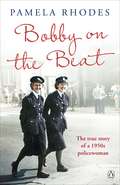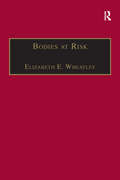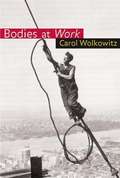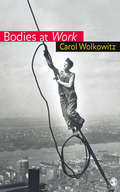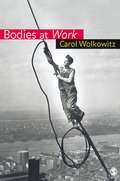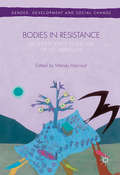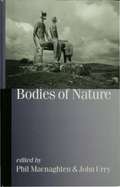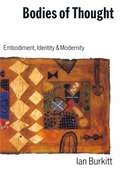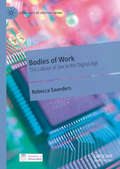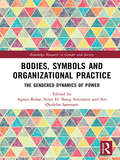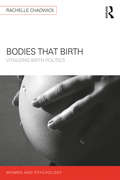- Table View
- List View
Blurring The Boundaries: The Declining Significance of Age
by Jack LevinOver the decades, the lines separating young- middle-aged-, and older adults have blurred, as indicated by a broadening of the appropriate years for making life decisions. Not only are many people marrying later, but some are marrying earlier than ever. Overall, women giving birth later, but some are having children earlier in their lives. Older people are retiring later, but some are retiring at a younger age. The spread or variability (standard deviation) of age-based decisions has increased substantially, giving adults greater freedom from the traditional constraints of age. With these relaxed age norms has come a host of related social problems. The relaxation of age norms for adult decision-making has inadvertently blurred the boundaries between adults and teenagers, between teenagers and children. This generalization of the phenomenon throughout the life cycle is responsible for the adultification of childhood. Eight year old girls are, to an increasing extent, being treated as sexual objects; bullying peaks in the 6th grade; larger numbers of girls are having oral sex or sexual intercourse by the age of 15; the pregnancy rate for girls 13-15 is on the rise; we are in the process of dismantling the juvenile justice system in favor of adult forms of punishment; and more and more children are left without adult supervision in the afternoons, as though they were miniature adults who are capable of raising themselves. Jack Levin is the American Sociological Association’s 2009 Winner of the “Public Understanding of Sociology” Award. This short book communicates the power and importance of sociological thinking to major, worldwide social trends. Ideal for use in undergraduate courses such as introductory sociology, social problems, and social change as well as more advanced courses in population, or sociology of aging.
Blurring The Boundaries: The Declining Significance of Age
by Jack LevinOver the decades, the lines separating young- middle-aged-, and older adults have blurred, as indicated by a broadening of the appropriate years for making life decisions. Not only are many people marrying later, but some are marrying earlier than ever. Overall, women giving birth later, but some are having children earlier in their lives. Older people are retiring later, but some are retiring at a younger age. The spread or variability (standard deviation) of age-based decisions has increased substantially, giving adults greater freedom from the traditional constraints of age. With these relaxed age norms has come a host of related social problems. The relaxation of age norms for adult decision-making has inadvertently blurred the boundaries between adults and teenagers, between teenagers and children. This generalization of the phenomenon throughout the life cycle is responsible for the adultification of childhood. Eight year old girls are, to an increasing extent, being treated as sexual objects; bullying peaks in the 6th grade; larger numbers of girls are having oral sex or sexual intercourse by the age of 15; the pregnancy rate for girls 13-15 is on the rise; we are in the process of dismantling the juvenile justice system in favor of adult forms of punishment; and more and more children are left without adult supervision in the afternoons, as though they were miniature adults who are capable of raising themselves. Jack Levin is the American Sociological Association’s 2009 Winner of the “Public Understanding of Sociology” Award. This short book communicates the power and importance of sociological thinking to major, worldwide social trends. Ideal for use in undergraduate courses such as introductory sociology, social problems, and social change as well as more advanced courses in population, or sociology of aging.
Blurring the Boundaries Through Digital Innovation: Individual, Organizational, and Societal Challenges (Lecture Notes in Information Systems and Organisation #19)
by Fabrizio D’Ascenzo Massimo Magni Alessandra Lazazzara Stefano ZaThis book examines the impact of digital innovation on organizations. It reveals how the digital revolution is redefining traditional levels of analysis while at the same time blurring the internal and external boundaries of the organizational environment. It presents a collection of research papers that examine the interaction between Information and Communication Technology (ICT) and behavior from a threefold perspective: First, they analyze individual behavior in terms of specific organizational practices like learning, collaboration and knowledge transfer, as well as the use of ICT within the organization. Second, they explore the dynamics at work on the border between the internal and the external environments by analyzing the organizational impact of ICT usage outside the company, as can be seen in employer branding, consumer behavior and organizational image. Third, they investigate how ICT is being adopted to help face societal challenges outside the company like waste and pollution, smart cities, and e-government. The diversity of views offered makes this book particularly relevant for users, companies, scientists and governments. The content is based on a selection of the best papers – original double-blind peer reviewed contributions –presented at the annual conference of the Italian chapter of AIS, which took place in Rome, Italy, in October 2015, or in other reputable international peer-refereed Information Systems conferences.
Blushing and the Social Emotions: The Self Unmasked
by W. CrozierThe blush is a ubiquitous, but little understood, phenomenon. It involves an involuntary change in the face that can express feelings, reveal character and cause intense anxiety. Crozier provides a scholarly, yet accessible, synthesis of new research, locating blushing within the context of the 'social emotions' of embarrassment, shame and shyness.
Boarding and Australia's First Peoples: Understanding How Residential Schooling Shapes Lives (Indigenous-Settler Relations in Australia and the World #3)
by Marnie O’BryanThis book takes us inside the complex lived experience of being a First Nations student in predominantly non-Indigenous schools in Australia. Built around the first-hand narratives of Aboriginal and Torres Strait Islander alumni from across the nation, scholarly analysis is layered with personal accounts and reflections. The result is a wide ranging and longitudinal exploration of the enduring impact of years spent boarding which challenges narrow and exclusively empirical measures currently used to define ‘success’ in education. Used as instruments of repression and assimilation, boarding, or residential, schools have played a long and contentious role throughout the settler-colonial world. In Canada and North America, the full scale of human tragedy associated with residential schools is still being exposed. By contrast, in contemporary Australia, boarding schools are characterised as beacons of opportunity and hope; places of empowerment and, in the best, of cultural restitution. In this work, young people interviewed over a span of seven years reflect, in real time, on the intended and unintended consequences boarding has had in their own lives. They relate expected and dramatically unexpected outcomes. They speak to the long-term benefits of education, and to the intergenerational reach of education policy. This book assists practitioners and policy makers to critically review the structures, policies, and cultural assumptions embedded in the institutions in which they work, to the benefit of First Nations students and their families. It encourages new and collaborative approaches Indigenous education programs.
Boasians at War: Anthropology, Race, and World War II
by Anthony Q. Hazard, Jr.This volume seeks to recover a specific historical moment within the tradition of anthropologists trained in the United States under Franz Boas, arguably the father of modern American anthropology. Focusing on Boasians Ashley Montagu, Margaret Mead, Melville Herskovits, and Ruth Benedict, Anthony Hazard highlights the extent to which the Boasians offer historicized explanations of racism that move beyond a quest to reshape only the discipline: Boasian war work pointed to the histories of chattel slavery and colonialism to theorize not just race, but the emergence of racism as both systemic and interpersonal. The realities of race that continue to plague the United States have direct ties to the anthropological work of the figures examined here, particularly within the context of the 20th-century black freedom struggle. Ultimately, Boasians at War offers a detailed glimpse of the long troubled history of the concept of race, along with the real-life realities of racism, that have carried on despite the harnessing of scientific knowledge to combat both.
Boaters of London: Alternative Living on the Water (Lifeworlds: Knowledges, Politics, Histories #5)
by Ben BowlesLondon and the Southeast of England is home to an alternative community of people called 'boaters': individuals and families who live on narrowboats, cruisers and barges, along a network of canals and rivers. Many of these people move from place to place every two weeks due to mooring rules and form itinerant communities in the heart of some of the UK’s most built-up and expensive urban spaces. Boaters of London is an ethnography that delves into the process of becoming a boater, adopting an alternative lifestyle on the water and the political impact that this travelling population has on the state.
Boaters of London: Alternative Living on the Water (Lifeworlds: Knowledges, Politics, Histories #5)
by Ben BowlesLondon and the Southeast of England is home to an alternative community of people called 'boaters': individuals and families who live on narrowboats, cruisers and barges, along a network of canals and rivers. Many of these people move from place to place every two weeks due to mooring rules and form itinerant communities in the heart of some of the UK’s most built-up and expensive urban spaces. Boaters of London is an ethnography that delves into the process of becoming a boater, adopting an alternative lifestyle on the water and the political impact that this travelling population has on the state.
Boaters of London: Alternative Living on the Water (Lifeworlds: Knowledges, Politics, Histories #5)
by Ben BowlesLondon and the Southeast of England is home to an alternative community of people called 'boaters': individuals and families who live on narrowboats, cruisers and barges, along a network of canals and rivers. Many of these people move from place to place every two weeks due to mooring rules and form itinerant communities in the heart of some of the UK’s most built-up and expensive urban spaces. Boaters of London is an ethnography that delves into the process of becoming a boater, adopting an alternative lifestyle on the water and the political impact that this travelling population has on the state.
Bob Dylan: The Never Ending Star (Celebrities)
by Lee MarshallBob Dylan’s contribution to popular music is immeasurable. Venerated as rock’s one true genius, Dylan is considered responsible for introducing a new range of topics and new lyrical complexity into popular music. Without Bob Dylan, rock critic Dave Marsh once claimed, there would be no popular music as we understand it today. As such an exalted figure, Dylan has been the subject of countless books and intricate scholarship considering various dimensions of both the man and his music. This book places new emphasis on Dylan as a rock star. Whatever else Dylan is, he is a star – iconic, charismatic, legendary, enigmatic. No one else in popular music has maintained such star status for so long a period of time. Showing how theories of stardom can help us understand both Bob Dylan and the history of rock music, Lee Marshall provides new insight into how Dylan’s songs acquire meaning and affects his relationship with his fans, his critics and the recording industry. Marshall discusses Dylan’s emergence as a star in the folk revival (the “spokesman for a generation”) and the formative role that Dylan plays in creating a new type of music – rock – and a new type of star. Bringing the book right up to date, he also sheds new light on how Dylan’s later career has been shaped by his earlier star image and how Dylan repeatedly tried to throw off the limitations and responsibilities of his stardom. The book concludes by considering the revival of Dylan over the past ten years and how Dylan’s stardom has developed in a way that contains, but is not overshadowed by, his achievements in the 1960s.
Bob Dylan: The Never Ending Star (Celebrities)
by Lee MarshallBob Dylan’s contribution to popular music is immeasurable. Venerated as rock’s one true genius, Dylan is considered responsible for introducing a new range of topics and new lyrical complexity into popular music. Without Bob Dylan, rock critic Dave Marsh once claimed, there would be no popular music as we understand it today. As such an exalted figure, Dylan has been the subject of countless books and intricate scholarship considering various dimensions of both the man and his music. This book places new emphasis on Dylan as a rock star. Whatever else Dylan is, he is a star – iconic, charismatic, legendary, enigmatic. No one else in popular music has maintained such star status for so long a period of time. Showing how theories of stardom can help us understand both Bob Dylan and the history of rock music, Lee Marshall provides new insight into how Dylan’s songs acquire meaning and affects his relationship with his fans, his critics and the recording industry. Marshall discusses Dylan’s emergence as a star in the folk revival (the “spokesman for a generation”) and the formative role that Dylan plays in creating a new type of music – rock – and a new type of star. Bringing the book right up to date, he also sheds new light on how Dylan’s later career has been shaped by his earlier star image and how Dylan repeatedly tried to throw off the limitations and responsibilities of his stardom. The book concludes by considering the revival of Dylan over the past ten years and how Dylan’s stardom has developed in a way that contains, but is not overshadowed by, his achievements in the 1960s.
Bobby on the Beat
by Pamela RhodesPamela Rhodes, one of the first British policewomen, tells her fascinating story in Bobby on the Beat.Back in 1950 Pam became one of the first policewomen in the country. But the force's new female recruits faced a sceptical public in rural Yorkshire and even before they stepped out on the beat there were the prejudices of older male officers to overcome.Yet from the first Pam was thrust into the front line. From runaway bulls to investigating ladies of the night and cases of vice, her innocent eyes were quickly opened. And soon, spending her days on the streets, she came to know the neighbourhood and the extraordinary characters who lived on the right, as well as wrong, side of the law.In the charming Bobby on the Beat, Pamela Rhodes's tales of life as a copper provide a fascinating glimpse of country life now long gone - when seeing a bobby on the beat meant all was well.Pamela Rhodes lives in Scarborough, where she was one of the first WPCs in Britain in the 1960s. Her unique story was picked up when she entered the life-story competition run by Penguin and Saga Magazine, in which she placed as a runner-up. This is her first memoir.
Bodies at Risk: An Ethnography of Heart Disease
by Elizabeth E. WheatleyIn Bodies at Risk, Elizabeth Wheatley provides a fascinating ethnography of heart disease. She looks at what happens to someone after a heart attack and how they get on with 'business as usual' in the wake of a potentially fatal medical crisis. How are daily routines, personal identities, families, friends, and careers affected and rearranged after diagnosis and treatment? This book examines the unfinished business of having and handling heart disease. The research is based on one-on-one and collective interviews, focus groups and participant observation in hospitals, cardiac rehabilitation clinics, and in people's homes. As heart disease is one of the major causes of death in the western world, this book is both timely and important. It is inspired by and contributes to sociological writing on the body, risk, experiences of illness, and medicalization, and will appeal to academics and students in these areas as well as in cultural studies, health-related consumption, health promotion and qualitative health research.
Bodies at Risk: An Ethnography of Heart Disease
by Elizabeth E. WheatleyIn Bodies at Risk, Elizabeth Wheatley provides a fascinating ethnography of heart disease. She looks at what happens to someone after a heart attack and how they get on with 'business as usual' in the wake of a potentially fatal medical crisis. How are daily routines, personal identities, families, friends, and careers affected and rearranged after diagnosis and treatment? This book examines the unfinished business of having and handling heart disease. The research is based on one-on-one and collective interviews, focus groups and participant observation in hospitals, cardiac rehabilitation clinics, and in people's homes. As heart disease is one of the major causes of death in the western world, this book is both timely and important. It is inspired by and contributes to sociological writing on the body, risk, experiences of illness, and medicalization, and will appeal to academics and students in these areas as well as in cultural studies, health-related consumption, health promotion and qualitative health research.
Bodies at Work
by Carol Wolkowitz'After reading this book it will be more difficult to e;doe; the sociology of work and the sociology of the body in the absence of the other. In some quite exquisite ways it throws down a challenge which practitioners in both fields will find difficult to ignore' - Paul Stewart, former editor of Work, Employment and Society, University of the West of EnglandBodies at Work provides the first full-length, accessible account of the body/work relation in contemporary western societies. Bringing together fields of sociology that have hitherto developed mainly along separate lines, the book demonstrates the relevance of concepts developed in the sociology of the body for enriching our understanding of changing patterns of work and employment. Bodies at Work begins by establishing key concerns in both the sociology of the body and the sociology of work. Drawing on existing research, the author proceeds to examine a wide range of employment sectors: industrial employment; customer relations; health practice; care work; the beauty industry; and sex work. The contribution of feminist theory and research is highlighted throughout, and analyses of photographs help the reader conceptualise the changing nature of the body/work relationship over time. Bodies at Work helps readers think more clearly and creatively about how work relations shape bodily experience.
Bodies at Work
by Carol Wolkowitz'After reading this book it will be more difficult to "do" the sociology of work and the sociology of the body in the absence of the other. In some quite exquisite ways it throws down a challenge which practitioners in both fields will find difficult to ignore' - "Paul Stewart, former editor of Work, Employment and Society, University of the West of England " Bodies at Work provides the first full-length, accessible account of the body/work relation in contemporary western societies. Bringing together fields of sociology that have hitherto developed mainly along separate lines, the book demonstrates the relevance of concepts developed in the sociology of the body for enriching our understanding of changing patterns of work and employment. Bodies at Work begins by establishing key concerns in both the sociology of the body and the sociology of work. Drawing on existing research, the author proceeds to examine a wide range of employment sectors: industrial employment; customer relations; health practice; care work; the beauty industry; and sex work. The contribution of feminist theory and research is highlighted throughout, and analyses of photographs help the reader conceptualise the changing nature of the body/work relationship over time. Bodies at Work helps readers think more clearly and creatively about how work relations shape bodily experience.
Bodies at Work (PDF)
by Dr Carol Wolkowitz'After reading this book it will be more difficult to "do" the sociology of work and the sociology of the body in the absence of the other. In some quite exquisite ways it throws down a challenge which practitioners in both fields will find difficult to ignore' - Paul Stewart, former editor of Work, Employment and Society, University of the West of England Bodies at Work provides the first full-length, accessible account of the body/work relation in contemporary western societies. Bringing together fields of sociology that have hitherto developed mainly along separate lines, the book demonstrates the relevance of concepts developed in the sociology of the body for enriching our understanding of changing patterns of work and employment. Bodies at Work begins by establishing key concerns in both the sociology of the body and the sociology of work. Drawing on existing research, the author proceeds to examine a wide range of employment sectors: industrial employment; customer relations; health practice; care work; the beauty industry; and sex work. The contribution of feminist theory and research is highlighted throughout, and analyses of photographs help the reader conceptualise the changing nature of the body/work relationship over time. Bodies at Work helps readers think more clearly and creatively about how work relations shape bodily experience.
Bodies in Resistance: Gender and Sexual Politics in the Age of Neoliberalism (Gender, Development and Social Change)
by Wendy HarcourtAs part of the emerging new research on civic innovation, this book explores how sexual politics and gender relations play out in feminist struggles around body politics in Brazil, Colombia, India, Iran, Mexico, Nepal, Turkey, Nicaragua, as well as in East Africa, Latin America and global institutions and networks. From diverse disciplinary perspectives, the book looks at how feminists are engaged in a complex struggle for democratic power in a neoliberal age and at how resistance is integral to possibilities for change. In making visible resistances to dominant economic and social policies, the book highlights how such struggles are both gendered and gendering bodies. The chapters explore struggles for healthy environments, sexual health and reproductive rights, access to abortion, an end to gender-based violence, the human rights of LGBTIQA persons, the recognition of indigenous territories and all peoples’ rights to care, love and work freely. The book sets out the violence, hopes, contradictions and ways forward in these civic innovations, resistances and connections across the globe.
Bodies of Nature (PDF)
by John Urry Dr Phil MacnaghtenThis book examines the embodied nature of people's experience in, and of, the modern world. It is therefore part of the deep-seated 'turn towards the body'. However, it is partly critical of this development in as much as it affirms that the sociology of the body has downplayed the extent to which the body is located in, and involved with, nature, the countryside, the outdoors, landscape and wilderness. The book argues that bodies in nature are subject to novel, complex and contradictory opportunities of freedom and escape, surveillance and monitoring. The book guides readers through the various ways in which these bodily opportunities and constraints are temporally and spatially organized and managed.
Bodies of Thought: Embodiment, Identity and Modernity (PDF)
by Ian BurkittIn this incisive and truly impressive book, Ian Burkitt critically addresses the dualism between mind and body, thought and emotion, rationality and irrationality, and the mental and the material, which haunt the post-Cartesian world. Drawing on the work of contemporary social theorists and feminist writers, he argues that thought and the sense of being a person is inseparable from bodily practices within social relations, even though such active experience may be abstracted and expanded upon through the use of symbols. Overcoming classic dualisms in social thought, Burkitt argues that bodies are not purely the constructs of discourses of power: they are also productive, communicative, and invested with powerful capacities for changing the social and natural worlds. He goes on to consider how such powers can be developed in more ethical forms of relations and activities.
Bodies of Thought
by Ian BurkittIn this incisive and truly impressive book, Ian Burkitt critically addresses the dualism between mind and body, thought and emotion, rationality and irrationality, and the mental and the material, which haunt the post-Cartesian world. Drawing on the work of contemporary social theorists and feminist writers, he argues that thought and the sense of being a person is inseparable from bodily practices within social relations, even though such active experience may be abstracted and expanded upon through the use of symbols. Overcoming classic dualisms in social thought, Burkitt argues that bodies are not purely the constructs of discourses of power: they are also productive, communicative, and invested with powerful capacities for changing the social and natural worlds. He goes on to consider how such powers can be developed in more ethical forms of relations and activities.
Bodies of Work: The Labour of Sex in the Digital Age (Dynamics of Virtual Work)
by Rebecca SaundersThis book is a timely and innovative exploration of the vital relationship between sex and capitalism in the digital age. It provides a lively, provocative analysis of how specifically digital forms of capitalist accumulation and labour shape and discipline the contemporary sexual body. Rebecca Saunders focuses on pornography in order to investigate the impact of digital forms of capitalism on contemporary sexuality and reveals the centrality of pornography to the digital attention economy, affective economics, the information economy, the creative industries and neoliberalism. Saunders uncovers a fundamental shift in the aesthetics and meaning of pornographic film, from a genre concerned with representing sexual pleasure to one that has become focused on representing sex as labour. Contemporary pornographic film is therefore read as a sign and symptom of how digital forms of capitalism regulate the twenty-first century sexual body through digital interfaces and technologies. Bodies of Work analyses major porn studios, dominant streaming platforms, significant directors and performers and queer and alternative pornographies, and presents new and significant concepts such as sexual datafication, the labour of visibility and interventionist pornography. Discussing pornographic film, sexuality, digital culture, labour and capitalism, this book will be of interest to students and scholars across gender studies, media and cultural studies, digital humanities and economics.
Bodies, Symbols and Organizational Practice: The Gendered Dynamics of Power (Routledge Research in Gender and Society)
by Agnes Bolsø Stine H. Bang Svendsen Siri ØyslebøDespite all the efforts to promote change, power and authority still seem to be permanently associated with the white, the straight and the masculine, both symbolically and in the everyday world of organizations. As the intricate relationship between the symbolic and the everyday remains under-researched, this anthology proposes a transdisciplinary feminist perspective drawing on the humanities in order to explore the complex nature of the gendered politics of organizations. Indeed, analyzing how images, narratives, symbols and bodies are all part of how power and gender are constructed in organizations through a broad and international range of empirical studies, Bodies, Symbols and Organizational Practice explores issues at the interstices of the humanities and social sciences, combining theoretical and analytical perspectives from both areas. Providing a radical analysis of the gendered dynamics of power as well as petitioning for radical intervention into those dynamics, this timely volume will appeal to postgraduate students and postdoctoral researchers interested in fields such as: Organization and Management Studies, Gender studies, Feminist theory and Sociology of Work & Industry.
Bodies, Symbols and Organizational Practice: The Gendered Dynamics of Power (Routledge Research in Gender and Society)
by Agnes Bolsø Stine Helena Bang Svendsen Siri Øyslebø SørensenDespite all the efforts to promote change, power and authority still seem to be permanently associated with the white, the straight and the masculine, both symbolically and in the everyday world of organizations. As the intricate relationship between the symbolic and the everyday remains under-researched, this anthology proposes a transdisciplinary feminist perspective drawing on the humanities in order to explore the complex nature of the gendered politics of organizations. Indeed, analyzing how images, narratives, symbols and bodies are all part of how power and gender are constructed in organizations through a broad and international range of empirical studies, Bodies, Symbols and Organizational Practice explores issues at the interstices of the humanities and social sciences, combining theoretical and analytical perspectives from both areas. Providing a radical analysis of the gendered dynamics of power as well as petitioning for radical intervention into those dynamics, this timely volume will appeal to postgraduate students and postdoctoral researchers interested in fields such as: Organization and Management Studies, Gender studies, Feminist theory and Sociology of Work & Industry.
Bodies that Birth: Vitalizing Birth Politics (Women and Psychology)
by Rachelle ChadwickBodies that Birth puts birthing bodies at the centre of questions about contemporary birth politics, power, and agency. Arguing that the fleshy and embodied aspects of birth have been largely silenced in social science scholarship, Rachelle Chadwick uses an array of birth stories, from diverse race-class demographics, to explore the narrative entanglements between flesh, power, and sociomateriality in relation to birth. Adopting a unique theoretical framework incorporating new materialism, feminist theory, and a Foucauldian ‘analytics of power’, the book aims to trace and trouble taken-for-granted assumptions about birthing bodies. Through a diffractive and dialogical approach, the analysis highlights the interplay between corporeality, power, and ideologies in the making of birth narratives across a range of intersectional differences. The book shows that there is no singular birthing body apart from sociomaterial relations of power. Instead, birthing bodies are uncertain zones or unpredictable assortments of physiology, flesh, sociomateriality, discourse, and affective flows. At the same time, birthing bodies are located within intra-acting fields of power relations, including biomedicine, racialized patriarchy, socioeconomics, and geopolitics. Bodies that Birth brings the voices of women from different sociomaterial positions into conversation. Ultimately, the book explores how attending to birthing bodies can vitalize global birth politics by listening to what matters to women in relation to birth. This is fascinating reading for researchers, academics, and students from across the social sciences.
